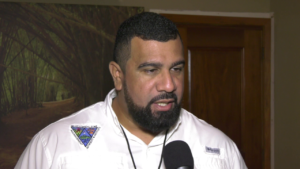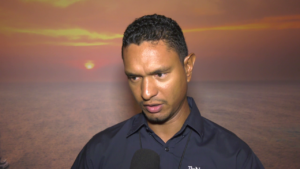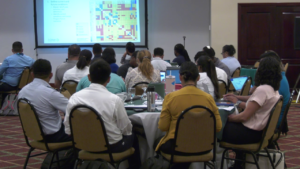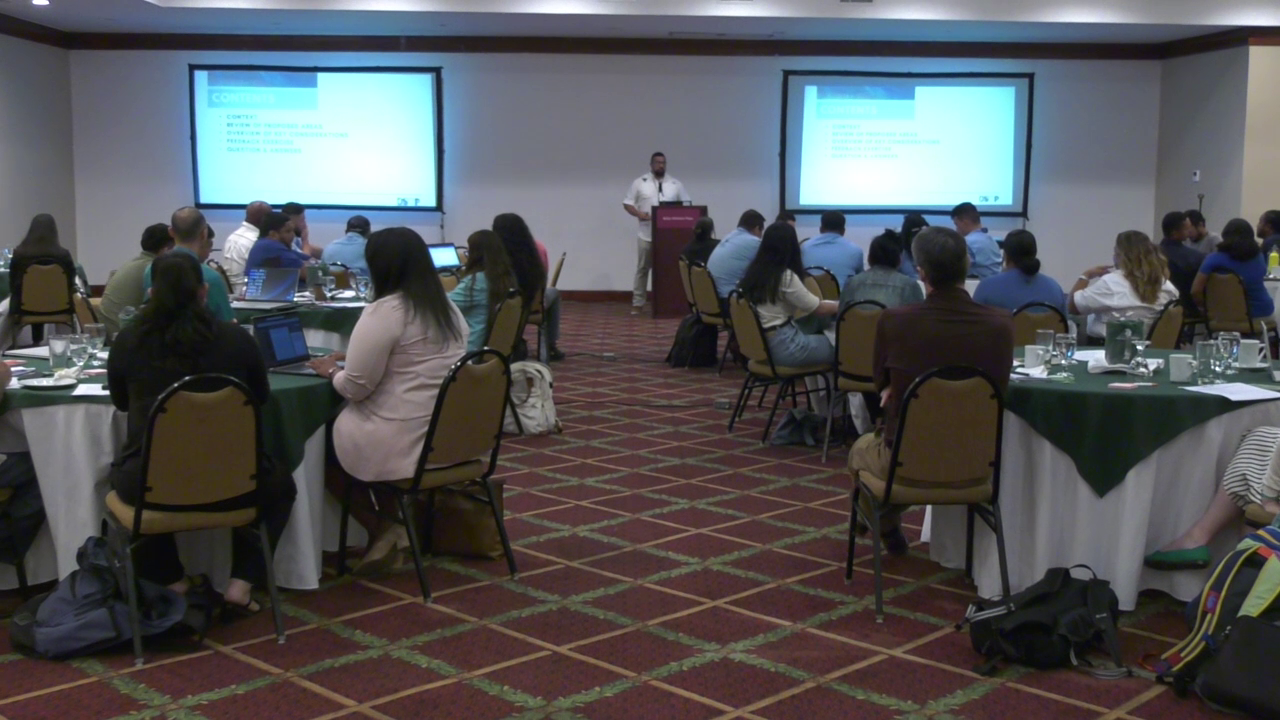Leaving Space for Sustainability in Our Oceans
This week, dozens of stakeholders from across various organizations are gathering to participate in the Multi-sector Marine Spatial Planning Workshop. This workshop is one of many carried out for the advancement of the Belize Sustainable Ocean Plan. The purpose of the workshop is to kickstart activities that for the delivery of commitments related to the Belize Blue Bond Agreement. Today’s events covered what marine spatial planning is and possible areas for new biodiversity protection zones. News Five’s Britney Gordon reports.
Britney Gordon, Reporting
Marine spatial planning refers to a process where stakeholders plan what activities will be restricted to certain areas of the ocean to ensure that the sea space is being used with conservation in mind. To meet the milestones outlined in the Belize Blue Bond agreement, consideration for biodiversity reserves and sustainability must be kept in mind when making these decisions. That is why a Multi-sector Marine Spatial Planning Workshop was held today in Belize City. Samir Rosado, MSP Process Lead at the Coastal Zone Management Authority and Institute, explained how these topics would be covered in today’s workshop.

Samir Rosado
Samir Rosado, MSP Process Lead, CZMAI
“During the workshop, day one of course, would be setting the stage for what spatial planning is. Specifically, what Marine spatial planning is. Giving the definitions, the context and really setting the stage for day two. which would be actually getting into the work. So we’ll be looking at existing conditions, in order to plan for the future, we definitely need to understand what the demands for space are currently. We’ll also be looking at compatibility between uses. Within our ocean space, as we refer to it there are a lot of different demands for related to various activities, fishing, tourism, so on and so forth. And so we need to see spatially, where overlaps exist if they are complementary or if they conflict. And really the purpose of day two and part of this workshop is to really determine where those conflicts would be and to assess whether or not, they can be assessed and separated to avoid any sort of negative effects to the delivery of the activity.”
Jamani Balderamos, a marine spatial planning specialist at The Nature Conservancy, told us that part of the workshop would be learning how to make use of a tool designed specifically for spatial planning. He said that the Marxan is publicly available on the internet and can be used by anyone with a graphic information system.

Jamani Balderamas
Jamani Balderamas, Marine Spatial Planning Specialist, TNC
“Marxan is actually a spatial planning tool, and it’s to help achieve conservation goals and objectives. So it will look at the entire ocean space, and in Belize we’re considering our internal waters, territorial seas, and exclusive economic zones. You can put in data such as ecosystems and human uses, and Marxan will look at how all these things are valued and try to minimize tradeoffs. you can customize the program to help you determine the best use of space to meet particular objectives. So if you want to look at the blue economy, you And we want to look at allocating space for tourism and so on. Marxan can then look at the tradeoffs and help us to determine the best use of space.”
A key component in the Belize sustainable Ocean Plan is the Belize Blue Bond agreement, which enables the country to reduce debt-burden and increase long-term ocean conservation. Safira Vasquez of the Blue Bond and Finance Permanence Unit explained how this factors into today’s discussions.

Safira Vasquez
Safira Vasquez, Senior Technical Officer, Blue Bond and Finance Permanence Unit
“The Belize Blue Bonds have several conservation milestones and commitments. And today’s event is actually a part of us leading up to our milestone four which we should meet in this year, November 2024, which is the for the designation of. up to twenty-five percent of our ocean space in biodiversity protection zones. So today’s event is basically they will be building upon some of the ground work that has been done by the coastal zone management authority, which is the government lead agency for our Marine Spatial Plan, which is known as the Belize Sustainable Ocean Plan. And so they will be building up on some of the work that they have been conducting with our various ocean users.”
 Rosado said that allocating space within the ocean for varying uses such as fisheries, tourism, coastal development, and protection for ecosystems is a necessary step in conservation.
Rosado said that allocating space within the ocean for varying uses such as fisheries, tourism, coastal development, and protection for ecosystems is a necessary step in conservation.
Samir Rosado
“There’s a lot of power in assigning space for activities because it takes away the instability of these activities and ensures that moving forward, these activities are sustainable over time. And really, the objective of marine spatial planning is to assign the space with a view to balance the multiple objectives that these activities may have. There’s environmental uses, there’s social uses, recreational, and then there’s economic uses. And the idea is to have, establish that balance to ensure that all of these objectives are satisfied through one process.”
Britney Gordon for News Five.







Facebook Comments